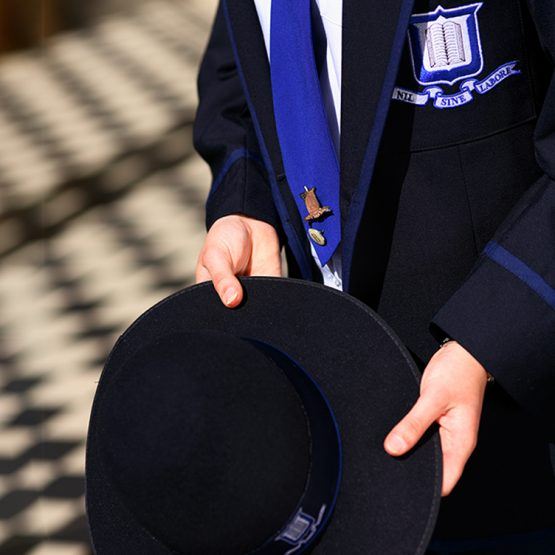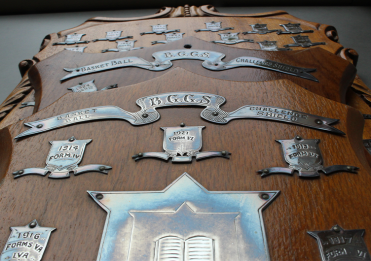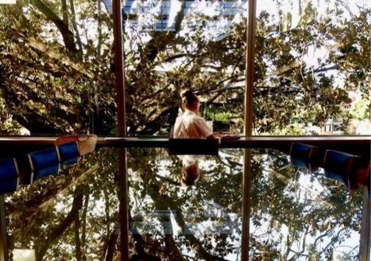How can a static board illustrate lifelong learning, selfless effort, and environmental awareness?
The rehabilitation of our Rangakarra site commenced in June 2014. The aim was to stabilise the banks of Cubberla Creek, which runs along one edge of the property. Grammar Goes Green—an ecology activity group within the School, coordinated by Science teacher and Grammar Woman, Mrs Chris Woodford (1972)—took on the task of coordinating volunteers among the students and staff to plant selected species three times a year. At the time, I was Head of Chemistry and proposed a program of specific planting to encourage the proliferation of birds, butterflies, and frogs. The plan was also to provide an accompanying noticeboard with images that would be both educative and enlightening to members of the School and the community.
I produced a list of 223 species of birds that had been sighted along the Cubberla and Witton Creeks catchments over a 40-year period to 2002. To make it a multifaceted educational experience, I also liaised with Multimedia and Interactive Technologies Teacher, Mr Brendon Thomas. He presented a project to his Year 10 classes to design a ‘card’ that included a clear image of a bird, its common and scientific name, and the Girls Grammar logo.
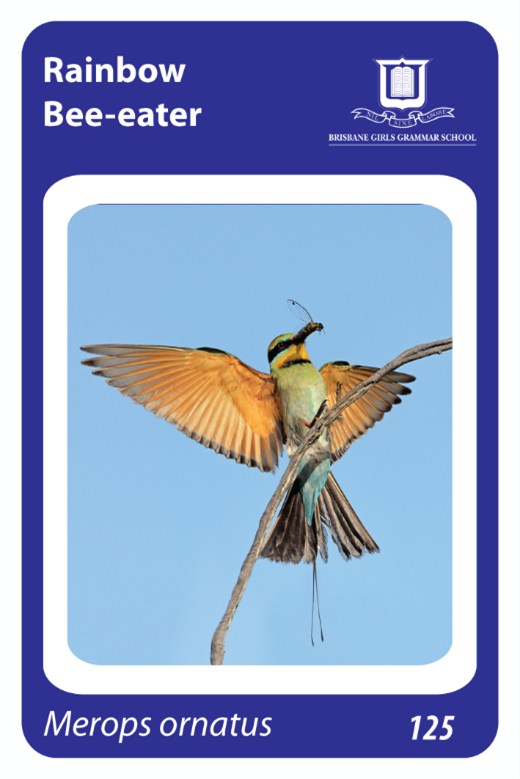
An example of one bird card
Two posters that featured these ‘cards’ were produced and placed behind weatherproof Perspex, sheltered with a roof, and erected at the Fig Tree Pocket campus in 2014. A short tour of the property in January 2015 resulted in the sighting of 32 species of the illustrated birds.
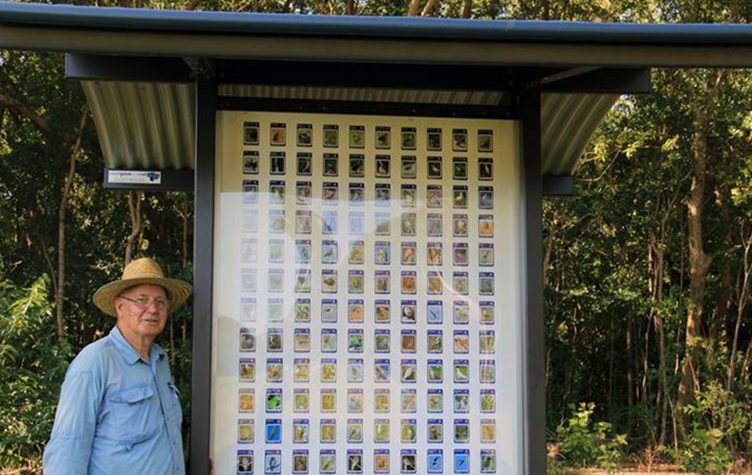
Dr Keith Treschman with bird signage
Similarly, I used a list of 82 butterflies compiled from species sighted along the Moggill Creek Catchment 2002-2008 by Dr Don Sands. Specific food plants for the butterflies and their caterpillars have been among the shrubs that have been planted on-site by many Grammar girls and staff over the years.
A set of butterfly cards that captured images of male and female specimens, the wingspan of each gender, common and scientific names, and designated one of five families to which it belonged, was developed by Year 8 Multimedia and Interactive Technologies classes. In June 2016, a butterfly poster was erected at Rangakarra, and on a walk through the property that month, I sighted 12 species.
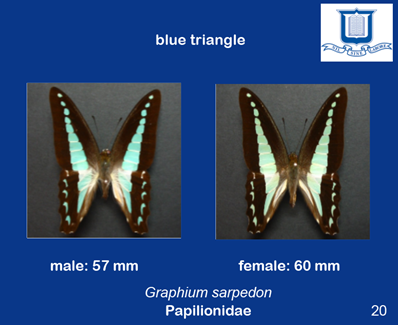
An example of a butterfly card
In 2018, the information was enhanced with a poster of 39 species of frog from the Brisbane area added to the shelter containing images of the birds and butterflies.
In 2016, a special project to provide plants for the Richmond birdwing butterfly was instigated. This is the largest Australian butterfly of the subtropics. It was formerly common in the area and attempts are now underway to return it to its former glory. The Richmond birdwing lays its eggs on only one vine species, the Pararistolochia praevenosa. This vine is difficult to grow and requires support until it ascends into the canopy of other plants.
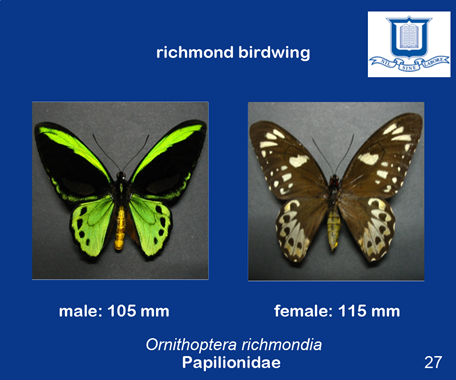
Images of Richmond birdwing butterfly
Property and Capital Works Manager at Girls Grammar, Mr Aaron Bowden, organised for the construction of two rows of 72 support structures in preparation for planting and nurturing of this vine.
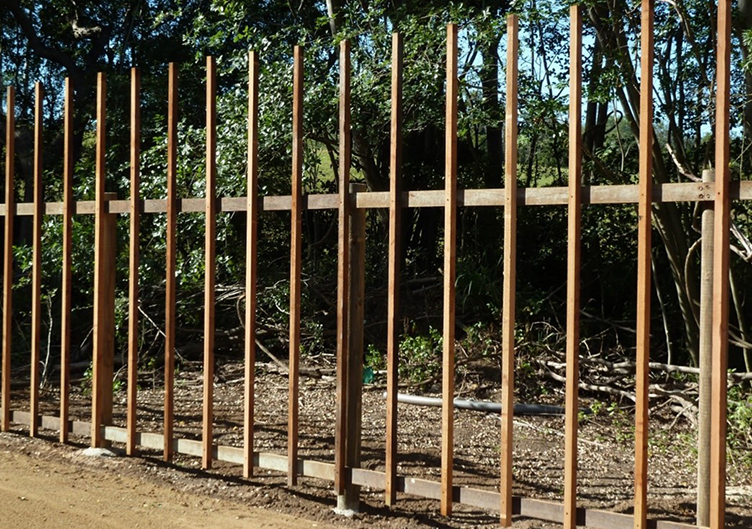
One of two support structures for the Richmond birdwing butterfly
The project encountered several serious setbacks. Severe sunlight in a dry period took its toll on some of the earlier plantings. Then, the property was flooded twice. A watering system was installed from the creek. When the vines were not doing well, a water test showed that the water was too saline. These challenging problems, however, were not insurmountable. Today, we see one of the support structures flourishing, and it is hoped that the environment for this species of butterfly will follow suit.
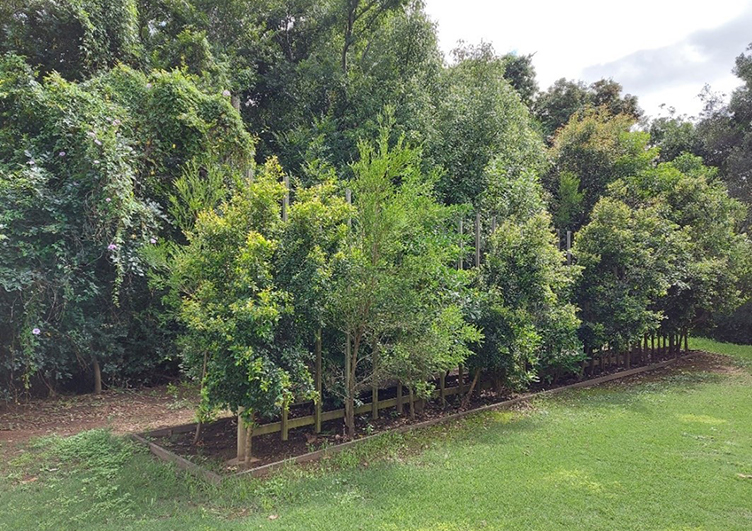
Plants surrounding one of the Rangakarra support structures for the Richmond birdwing butterfly foliage
It is a great achievement to leave a place in better condition than when having arrived. This aspect of the Rangakarra environment has flourished under the watchful eye of so many committed people—the Science Faculty, Grammar Goes Green, Student Council, Facilities Department—and what has been created is a verdant legacy for future Grammar girls.
This rejuvenation project is also a living example of the Grammar motto and philosophy: ‘Nothing without hard work’, always work to improve, serve others, and never stop learning. These precepts are all evident when one views the plants, wildlife, and signage of this serene pocket of Brisbane, that is Rangakarra.
Dr Keith Treschman
Science Staff 2021

2015 GGG with Lauren Fidler, Hannah Pourzinal and Ranita Atchison and butterfly
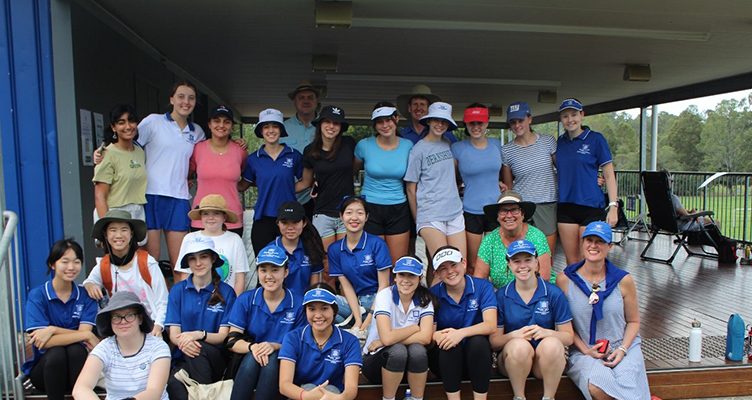
2021 Grammar Goes Green at Rangakarra

